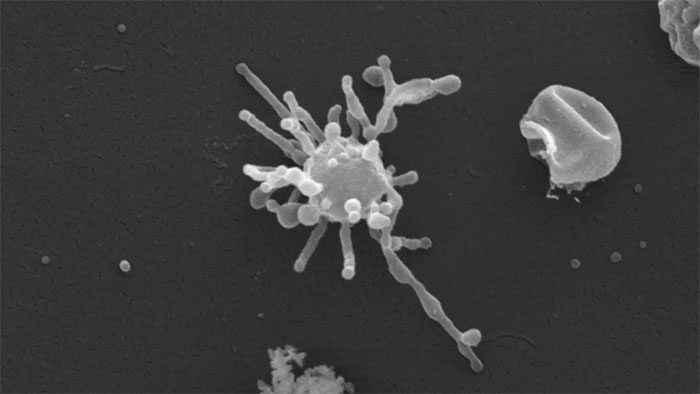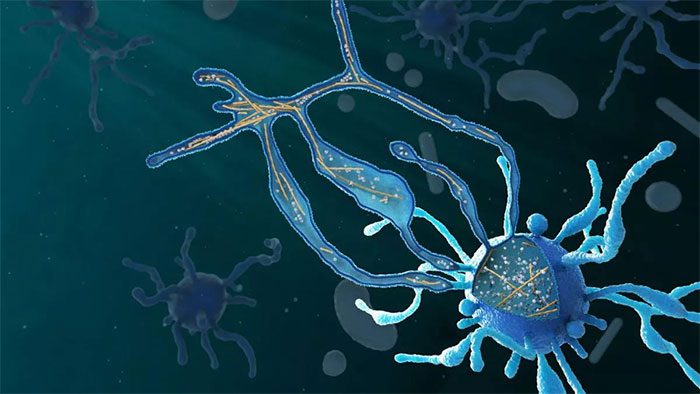Scientists Successfully Cultivate and Capture Detailed Images of an Extraordinary Organism That May Be the “Ancient Ancestor” of Humans and All Life Forms.
In the images released by an international research team led by Dr. Jan Löwe from the Medical Research Council’s (MRC – UK) Molecular Biology Laboratory, there is a strange life form with unusual tentacles, resembling the extraterrestrial creatures depicted in films.
This organism is a life form resurrected from a world billions of years ago – Asgard archaea.

Actual image of the successfully cultivated Asgard archaea – (Photo: VIENNA UNIVERSITY).
The Asgard archaea, with the oldest evidence dating back to sediments up to 2.7 billion years old, is one of the earliest life forms on Earth, once believed to be the oldest relative of eukaryotes, which are complex organisms whose genetic material is organized within a membrane-bound nucleus.
According to Live Science, eukaryotic organisms are positioned as the ancestors of most species on Earth today, including us. Asgard, a non-eukaryotic organism, is identified as a higher ancestor of eukaryotes because it contains a set of genes and proteins akin to those of this group of “descendants.”
The recreation of Asgard archaea will help answer the puzzle of the evolutionary leap: How did it evolve into an organism with a nucleus, leading to a series of complex evolutionary processes that ultimately resulted in “higher” species, including humans?
The selected Asgard archaea species is Lokiarchaeum ossiferum, which scientists took six years to establish a laboratory community.
However, having overcome the greatest hurdle, they are confident they can create a sufficient archaea ecosystem for ambitious subsequent experiments, as it grows rapidly, doubling its cell count in just 7-14 days.

Graphic depiction of the alien-like organism and our ancient ancestor – (Photo: UTAH UNIVERSITY).
The recently resurrected ancestor has been recorded, showcasing a complex body. They capture prey – bacteria – using tentacles and suckers, similar to an octopus, but not a terrestrial octopus. Dutch environmental microbiologist Thijs Ettema from Wageningen University, who was not involved in the research, remarked that they “look like they come from another planet.”
The study has just been published in the journal Science.





















































